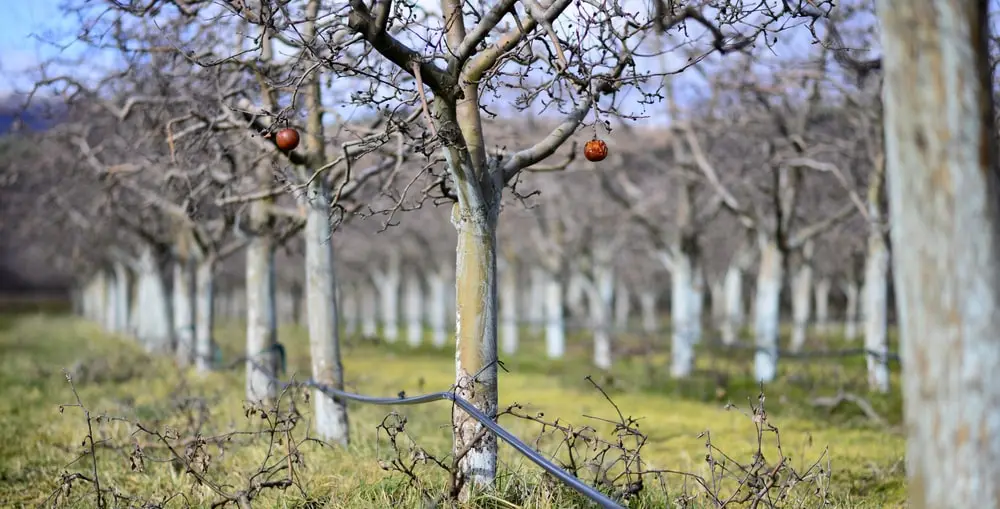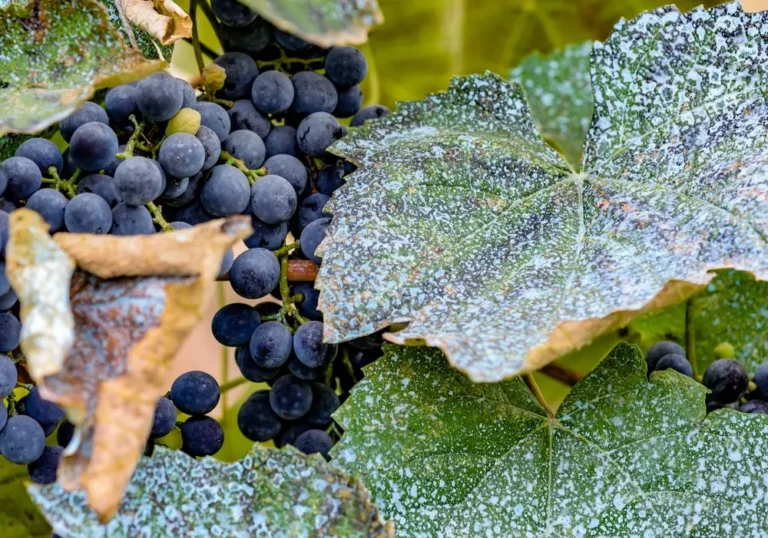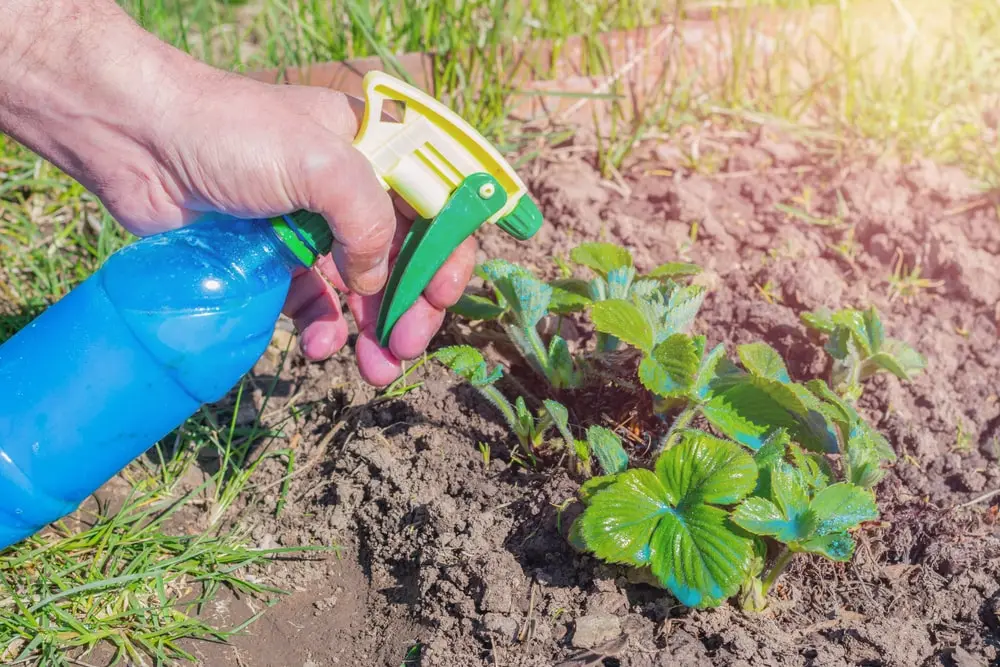Confronting the Blight: A User-Friendly Tutorial to Bordeaux Mixture for Your Home-Garden

The process of making Bordeaux mixture at home is relatively simple, requiring only a few basic ingredients & tools. Is your prized rose garden battling a black spot? Are your grapevines covered in downy mildew? Fungal diseases can leave any gardener feeling discouraged. But don’t worry, there’s a solution in your gardening toolbox: Bordeaux mixture!

What is Bordeaux Mixture?
Ever wished your plants had a bodyguard? Bordeaux mixture is like a shield against nasty fungus. It’s a spray made with copper sulfate & lime, invented way back in France (that’s why it’s called Bordeaux mixture!). Spray it on your plants, and it helps stop fungus spores from growing on them and making them sick.

Benefits of Bordeaux Mixture
Organic Option: Bordeaux mixture is often considered an organic fungicide, making it a popular choice for gardeners seeking a natural approach.
Broad Spectrum Defense: This versatile mixture tackles a range of fungal & bacterial diseases, including downy mildew, powdery mildew, black spot, and anthracnose.
Easy to Find: Many garden centres and online retailers carry Bordeaux mixture, so you can get your hands on it readily.

How to Use Bordeaux Mixture Safely and Effectively
Please Note: Always follow the instructions on the product label you purchase. Bordeaux mixture ratios can vary depending on the brand and intended use.
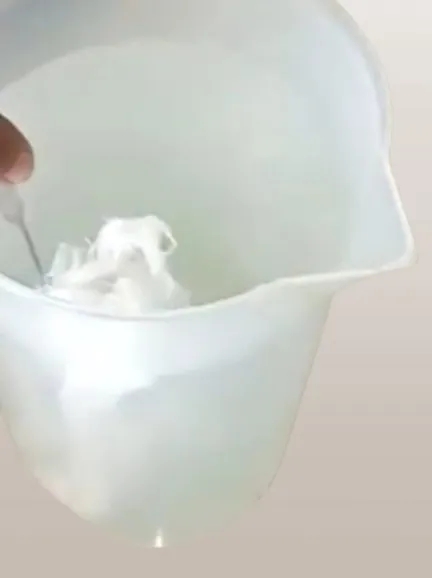
Here’s a general guideline:
Safety First: Wear gloves, eye protection, and long sleeves when handling Bordeaux mixture.
Mixing Magic: Bordeaux mixture is typically made by dissolving copper sulfate and lime in separate water containers and then combining them carefully.
Target Time: Apply Bordeaux mixture as a preventative measure before fungal diseases appear.
Spray Savvy: Thoroughly coat all plant surfaces, including the undersides of leaves, but avoid over-spraying.
Repeat, But Not Too Often: While the Bordeaux mixture is relatively safe, repeated use can build up copper in the soil. Follow recommended spray schedules and avoid overuse.
Bonus Tip: Check your local weather forecast. Avoid applying Bordeaux mixture before heavy rain, as it can wash away the protective coating.

Bordeaux Mixture: A Friend to Your Garden
By incorporating Bordeaux mixture into your gardening routine, you can give your plants a fighting chance against fungal foes. Remember, prevention is key! With proper use, this time-tested formula can help you achieve a thriving, disease-resistant garden. Once you’ve mastered the technique, making Bordeaux mixture at home can become a regular part of your organic gardening routine.
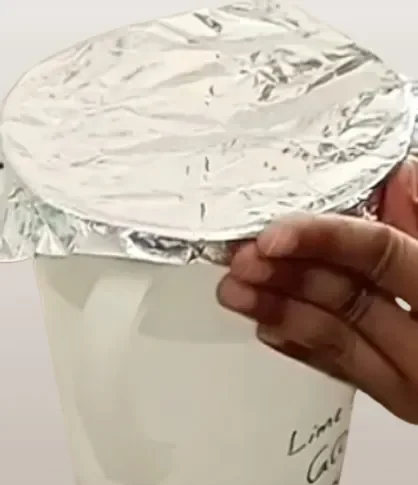
strongly advise against this unless you’re a trained professional. Here’s why:
Hazardous Chemicals: Both copper sulfate & lime can be harmful if not handled correctly. Copper sulfate is an irritant and can cause respiratory problems, while lime can irritate skin & eyes.
Safety Precautions: A lab setting requires specific safety gear(PPE) like gloves, eye protection, and a respirator, along with proper ventilation to avoid inhaling harmful dust. Improper handling can lead to accidents.
Given the risks, safer alternatives are available:
Pre-mixed Bordeaux Mixture: Many garden centres sell pre-mixed Bordeaux mixture that’s safe and convenient to use.
Consult a Professional: For large-scale applications or specific needs, consulting a professional gardener or agricultural expert is recommended. They can advise on safe preparation & application methods.
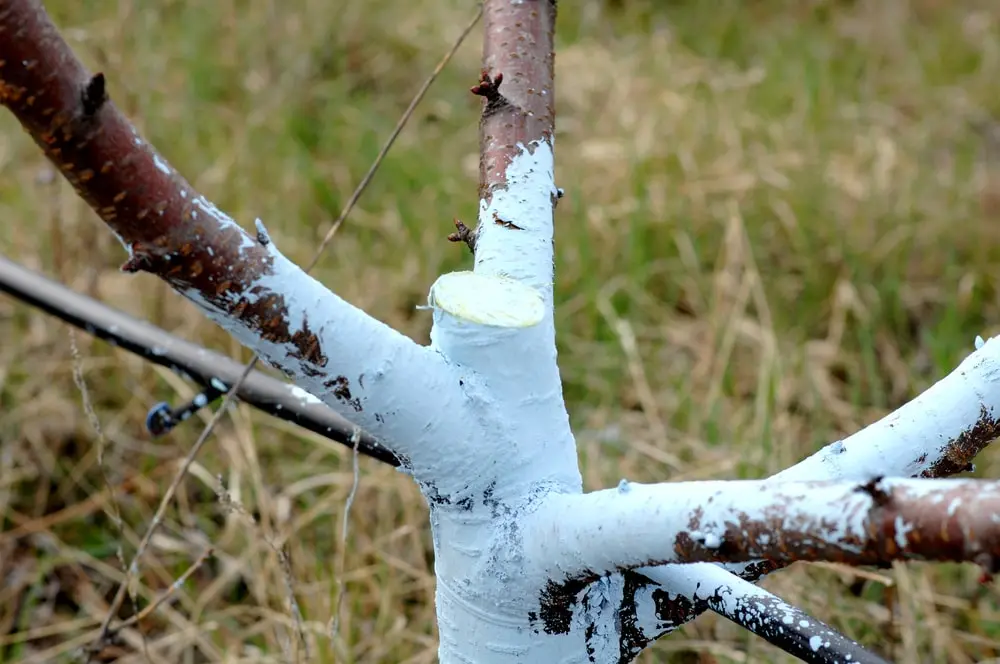
Making Bordeaux mixture at home is easier than you think!
Disclaimer: Again, this is for informational purposes only. Improper handling can be dangerous.
Preparation Ratio: 1:1:100 Bordeaux mixture means:
- 1 part copper sulfate.
- 1 part lime (hydrated lime or calcium hydroxide).
- 100 parts water.
Safety Measures: Ensure you have:
- Proper personal protective equipment or gear (gloves, eye protection, respirator)
- Well-ventilated workspace.
- Knowledge of safe handling procedures for copper sulfate & lime.
- Remember: Consulting a qualified professional or using a pre-mixed solution is always the safest approach.
- safety is paramount when handling chemicals, so always wear gloves & eye protection when making Bordeaux mixture at home.
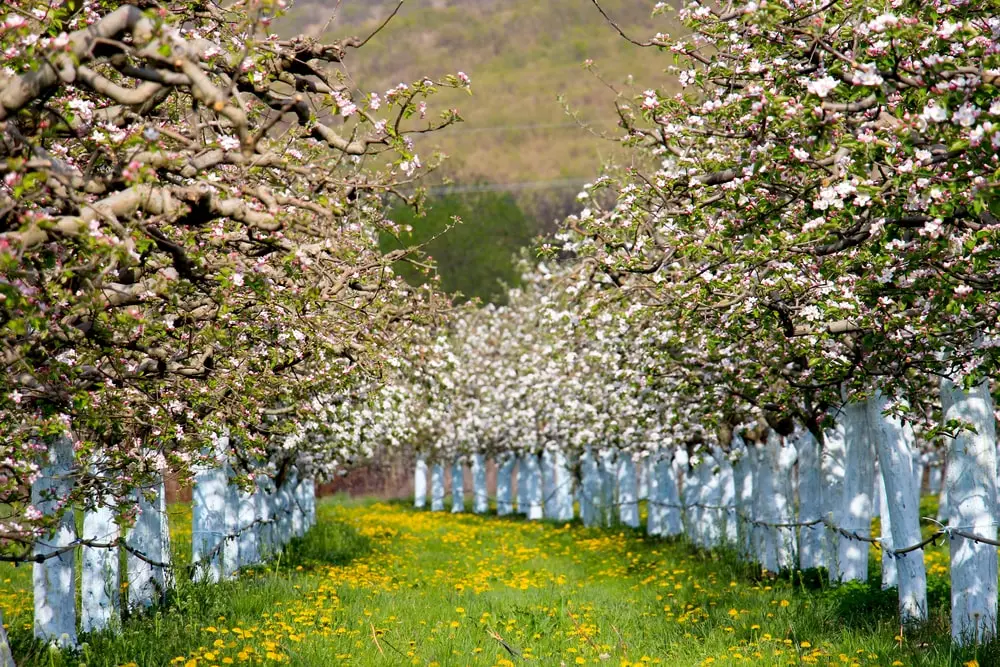
Slaking the Lime
Slaked lime, or hydrated lime, itself isn’t formed through a chemical reaction. It’s the product of a slaking process, which is the addition of water to quicklime (calcium oxide, CaO).
Here’s the chemical equation for the slaking reaction:
CaO (s) + H2O (l) –> Ca(OH)2 (aq) + Heat
Explanation:
CaO (s): Calcium oxide (quicklime) in solid state.
H2O (l): Water in a liquid state.
Ca(OH)2 (aq): Calcium hydroxide (hydrated lime) in aqueous solution (dissolved in water).
Heat: This reaction is exothermic, meaning it releases heat.
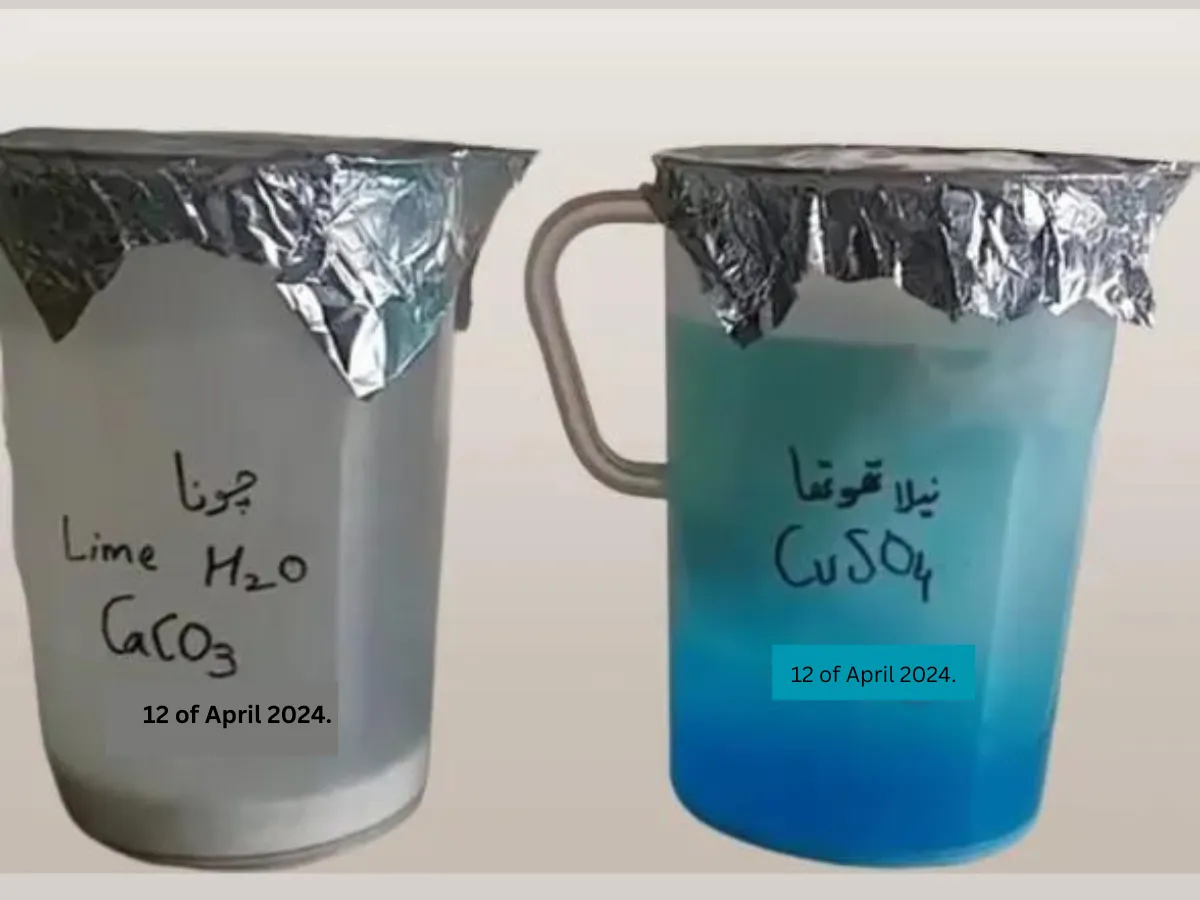
Ca(OH)2 or Slaked Lime
Here’s a breakdown of the formula:
Ca: Calcium atom.
(OH): Hydroxide group (one oxygen atom bonded to one hydrogen atom).
2: There are two hydroxide groups bonded to the central calcium atom.
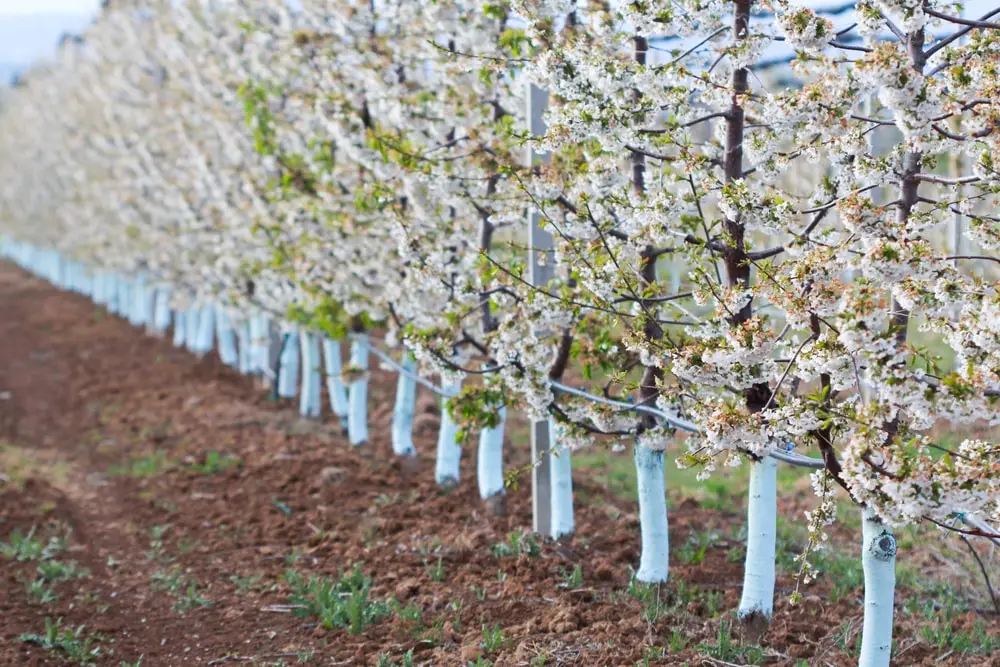
To Prepare 5 Liters of Bordeaux Mixture
Ingredients:
- 50 grams Copper Sulfate (CuSO4).
- 50 grams Quick Lime (Calcium Carbonate).
- 5 litres of Water.
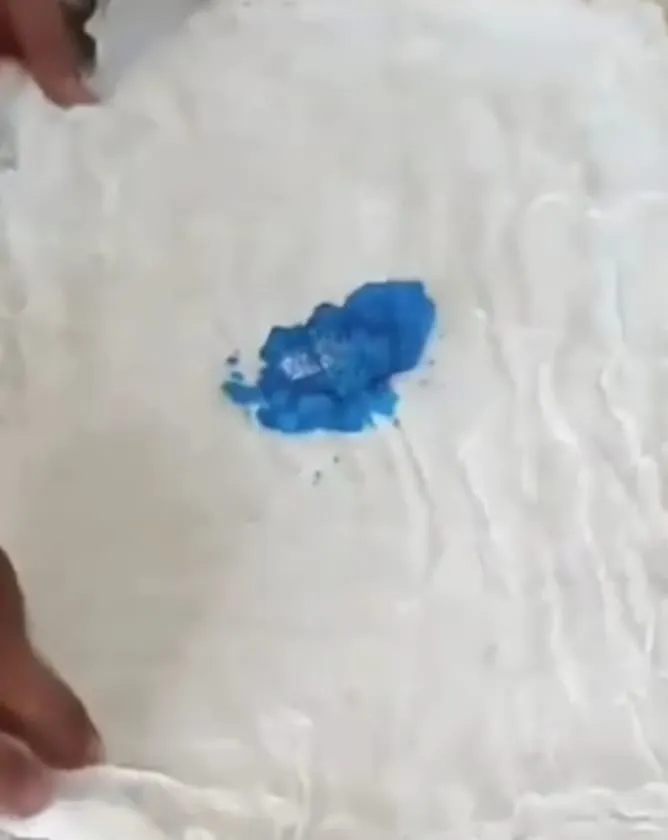
Instructions:
Make Copper Sulfate Solution:
- Place CuSO4 in a double-layered cheesecloth pouch (potli). This removes impurities that might not dissolve.
- Suspend the potli in 2 litres of water in a jug. Stir occasionally to aid diffusion.
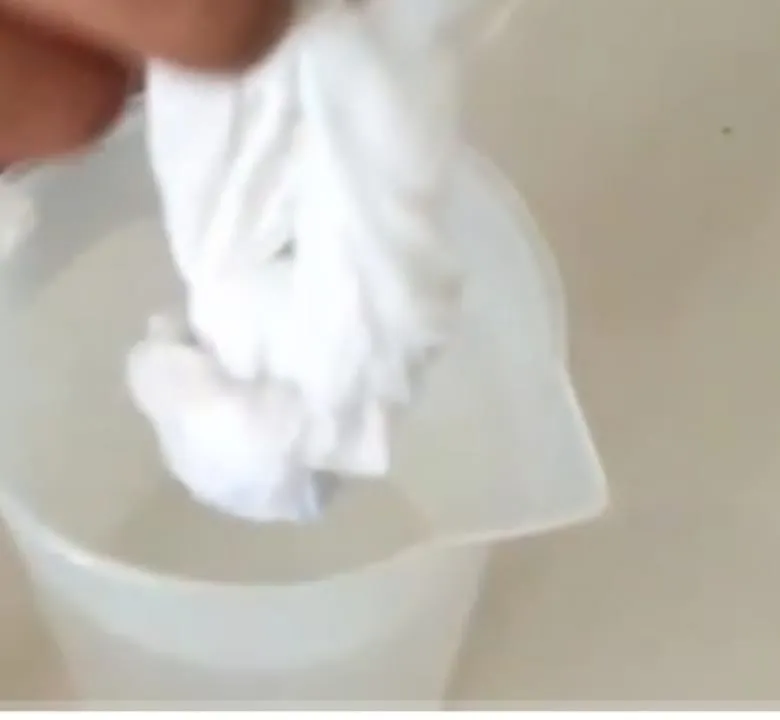
Make Slaked Lime Solution (Safety Note: Wear gloves & eye protection):
- Slowly add calcium carbonate to another jug containing 2 litres of water.
- The mixture will heat up and fizz as the lime dissolves.
- Cover both jugs with aluminium foil and leave overnight.

Mixing the Solutions:
- The next day, remove the CuSO4 potli and stir the solution with a wooden, glass, or plastic stirrer (avoid metal).
- Strain the slaked lime solution through cheesecloth to remove any impurities.
- Check the pH of both solutions separately & keep the notes of it.

Combining and Testing:
- Option 1: Slowly pour both solutions simultaneously into a 5-litre container.
- Option 2: Pour the slaked lime solution into the CuSO4 solution (never the other way around). This prevents an unusable precipitate or in simple wording let’s say that add the dissolved slaked lime solution to the copper sulfate solution, not the other way around. This ensures a proper chemical reaction & prevents the formation of phytotoxic compounds that can harm plants.
- Dip a clean iron rod, knife, or blade into the solution for 3 minutes.
- If there’s a reddish stain (rust), add more slaked lime solution until the test shows no rust.
- Remember, the pH of the prepared solution must be 7 or slightly above 7 (basic), not acidic.
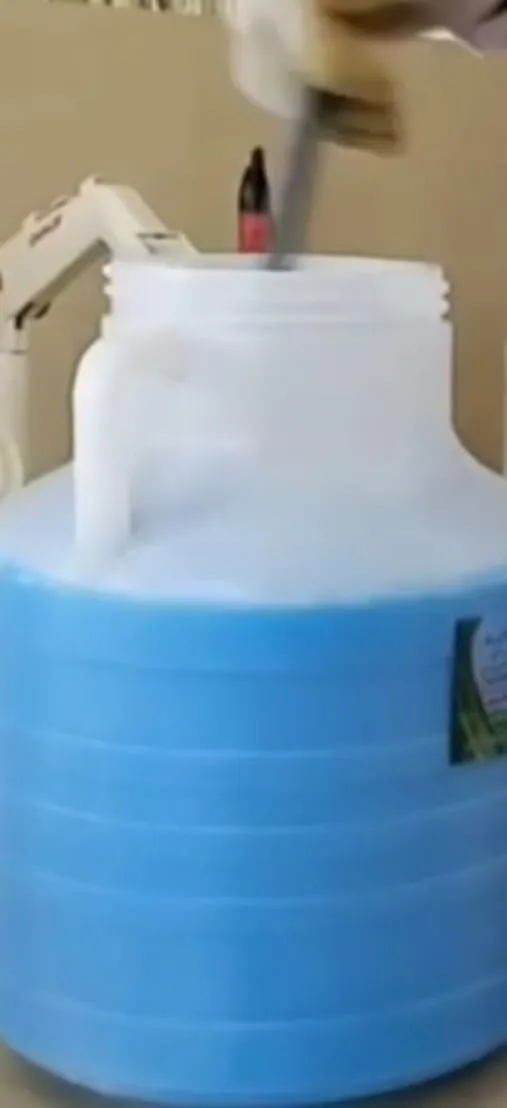
Final Touches:
- Add the remaining 1 litre of water to reach the desired volume (5 litres).
- Stir well to create a homogenous mixture.
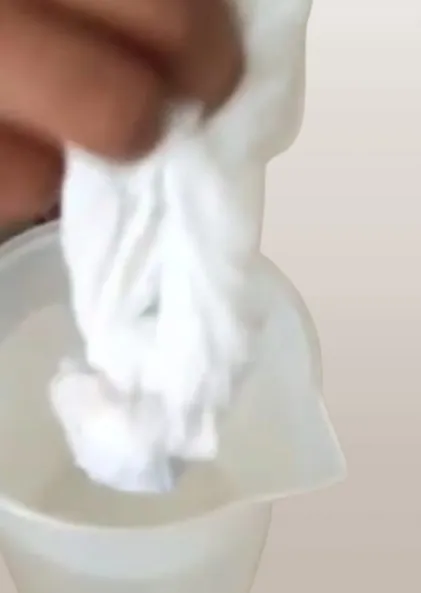
Important Notes:
Freshness is Key: Always make fresh Bordeaux mixture and use it within 24 hours for optimal efficiency.
Ratio: Prepare the mixture according to the 1:1:100 ratio (1 part CuSO4, 1 part lime, 100 parts water).
Benefits: Effective against various fungal and bacterial diseases, including anthracnose, citrus canker, blight, rice blast, downy mildew, and powdery mildew.
Prevention is Best: Bordeaux mixture is a preventative fungicide. Use it before disease onset or at the earliest stage for best results.
Alternative Fungicides: Consider other options for established diseases.
Cost-Effectiveness: Using Bordeaux mixture as a preventive fungicide can save money on other fungicides or bactericides.
Safe Application: The final solution’s pH should be 7 or above to avoid burning or stressing plants.
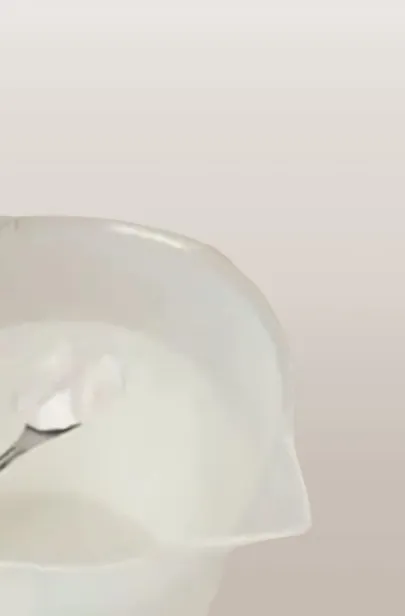
Additional Tips:
- Wear gloves & eye protection when handling lime.
- Dispose of leftover mixture & cleaning materials properly.
- Follow all safety precautions when using the Bordeaux mixture.
Conclusion
By following these steps, you can create your own effective Bordeaux mixture for your garden needs. For those looking for a cost-effective way to combat fungal diseases, making Bordeaux mixture at home is a viable option. Remember, this fungicide is most beneficial as a preventative measure, so apply it before disease strikes. With a little preparation, you can save money & keep your plants healthy!
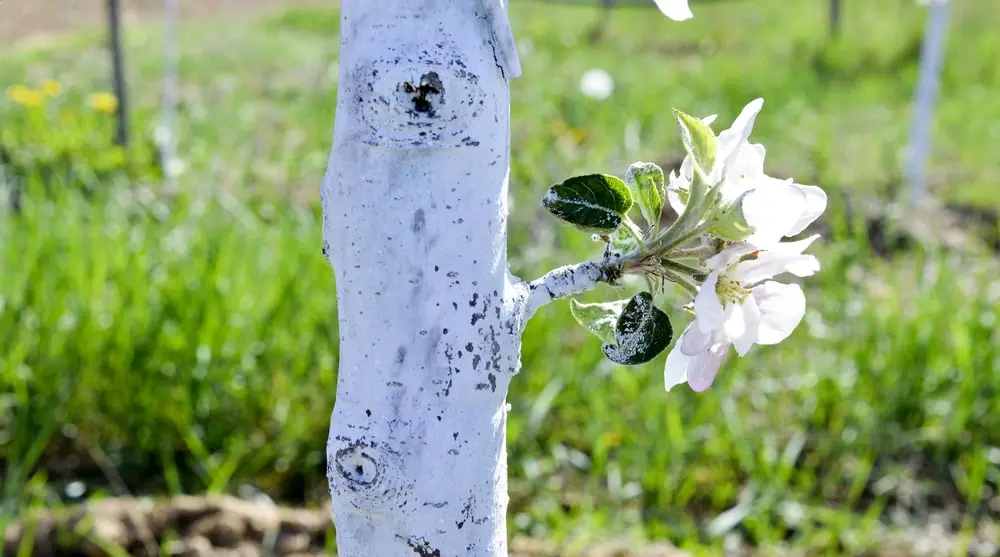
FAQS
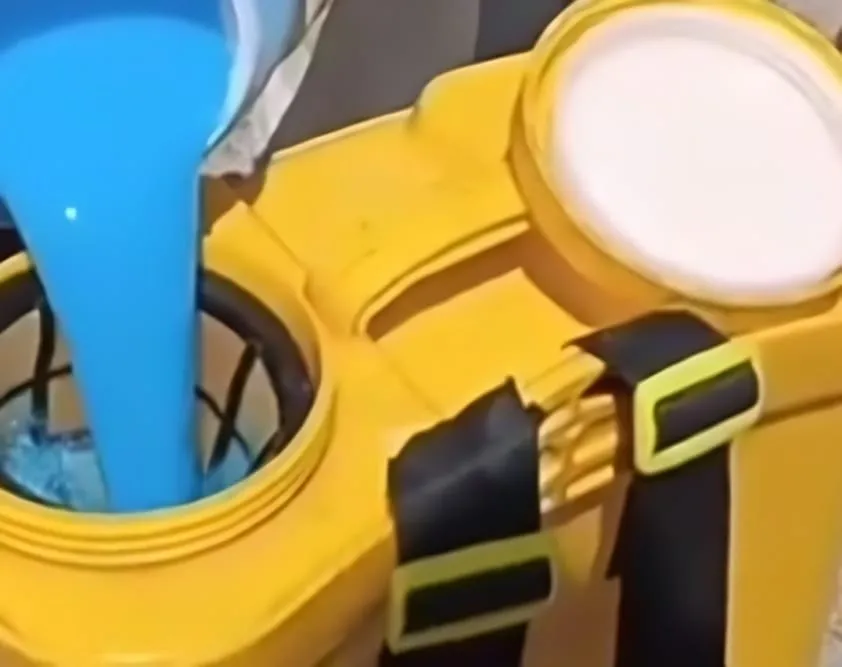
Q: What is Bordeaux mixture?
Ans: Bordeaux mixture is a fungicide, a substance used to prevent and control fungal diseases in plants. It’s a mixture of copper sulfate and hydrated lime (slaked lime).
Q: Why is it called Bordeaux mixture?
Ans: It was developed in the Bordeaux region of France in the 19th century, hence the name.
Q: Is the Bordeaux mixture organic?
Ans: While not certified organic in some regions, it’s often considered an acceptable choice for organic gardening due to its natural ingredients (copper and lime).
Q: Is the Bordeaux mixture safe for humans and pets?
Ans: Direct contact can irritate skin and eyes. When used properly and following safety precautions, it’s generally safe for humans and pets once dry on plants.
Q: Where can I buy the Bordeaux mixture?
Ans: Many garden centres and online retailers sell Bordeaux mixture.
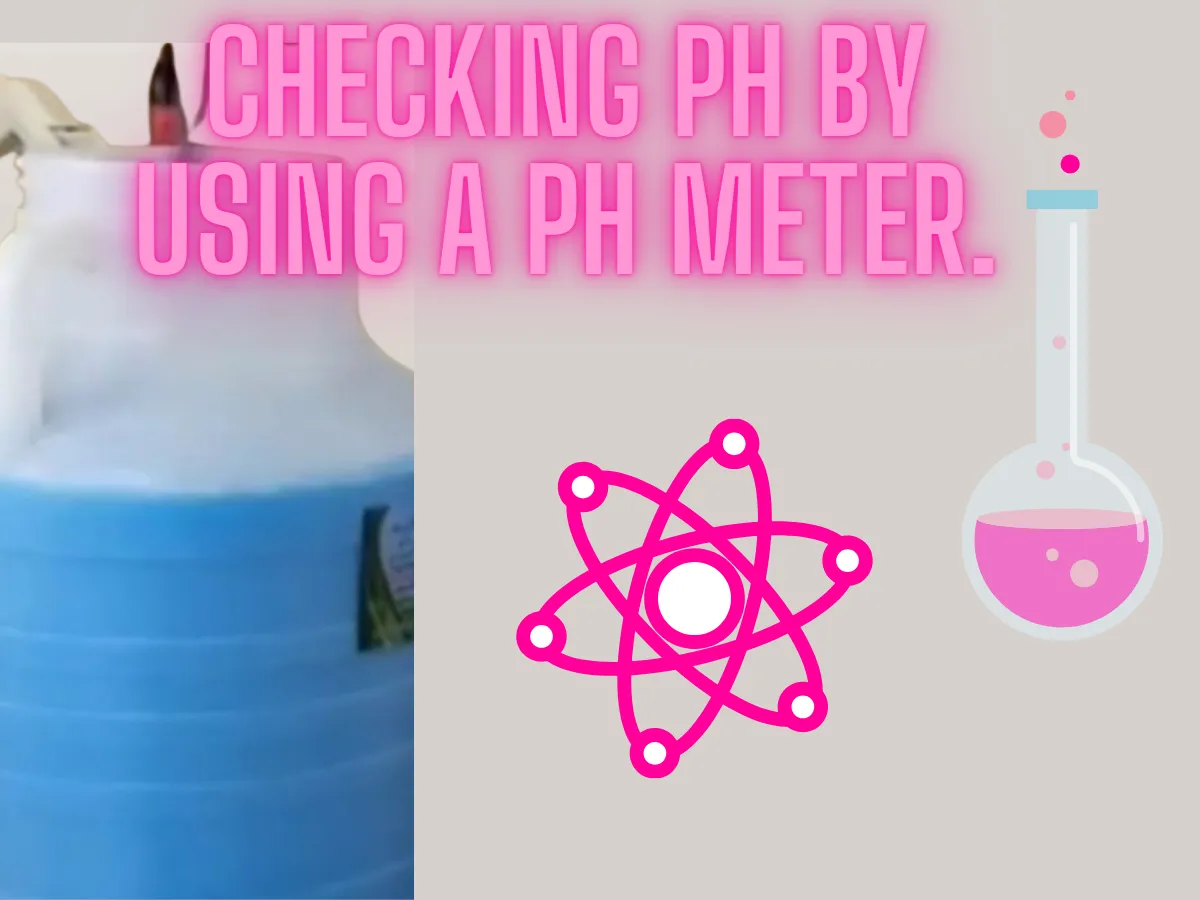
Q: What are the different types of Bordeaux mixture?
Ans: There are variations in the mixing ratios of copper sulfate and lime depending on the intended use and desired strength. Always follow specific product instructions.
Q: How do I make a Bordeaux mixture at home?
Ans: It’s generally safer to purchase a pre-mixed version due to the potential for incorrect mixing ratios harming plants. However, with proper precautions, instructions for homemade Bordeaux mixture can be found online.
Q: What safety precautions should I take when handling Bordeaux mixture?
Ans: Wear gloves, eye protection, and long sleeves when mixing and applying Bordeaux mixture.
Q: What happens if I mix the Bordeaux mixture incorrectly?
Ans: Incorrect mixing ratios can damage plants due to excess copper or phytotoxic (plant-harming) compounds.
Q: When is the best time to apply the Bordeaux mixture?
Ans: Bordeaux mixture is most effective as a preventative measure. Apply before signs of disease appear, typically during dormant periods or early in the growing season.

Q: How often can I use the Bordeaux mixture?
Ans: Follow the specific product instructions and avoid overuse. Frequent application can lead to copper buildup in the soil, potentially harming beneficial organisms.
Q: How much Bordeaux mixture should I use?
Ans: The amount depends on the plant size and area being treated. Refer to product instructions for recommended dilution rates.
Q: What parts of the plant should I spray with Bordeaux mixture?
Ans: Thoroughly coat all plant surfaces, including the undersides of leaves, but avoid overspraying.
Q: What should I do if I accidentally get Bordeaux mixture on my skin or eyes?
Ans: Flush the affected area with clean water for at least 15 minutes and seek medical attention if irritation persists.
Q: What types of fungal diseases does the Bordeaux mixture control?
Ans: It’s effective against a broad spectrum of fungal diseases, including downy mildew, powdery mildew, black spot, and anthracnose.
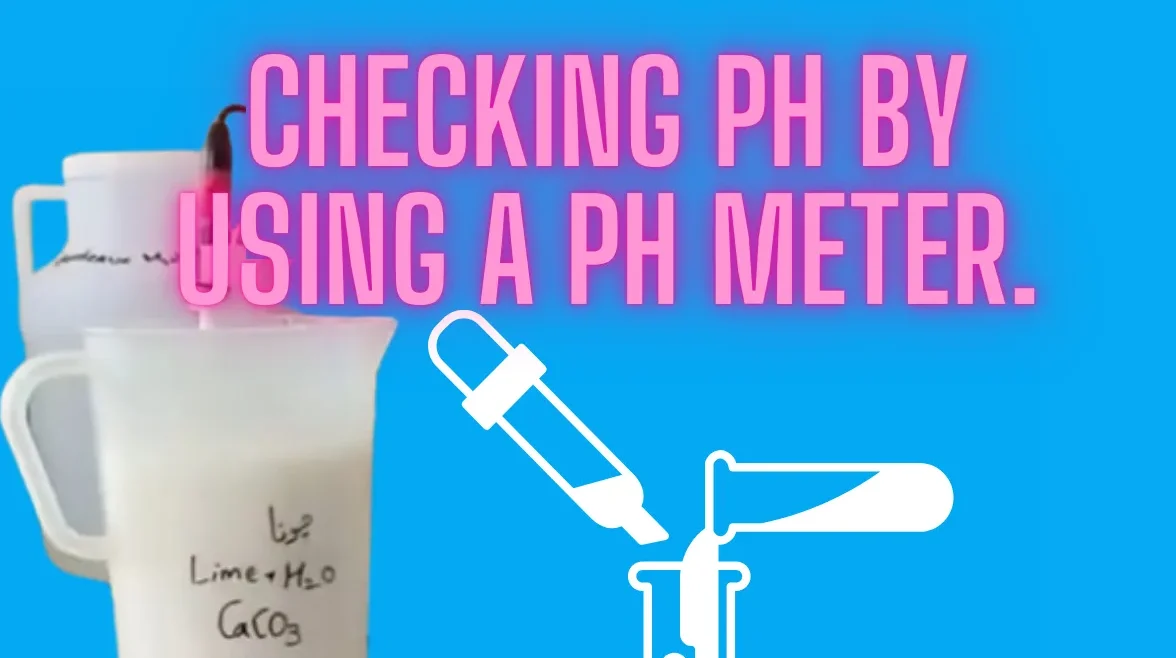
Q: How long does the Bordeaux mixture remain effective after application?
Ans: Weather conditions like rain can shorten its effectiveness. Generally, reapply every 7-10 days during wet weather or according to product instructions.
Q: Can the Bordeaux mixture be used on all plants?
Ans: While generally safe for many plants, some may be sensitive to copper. Test on a small area of the plant before widespread application.
Q: Does the Bordeaux mixture harm beneficial insects?
Ans: Yes, excessive use can be harmful to beneficial insects like bees and ladybugs. Opt for targeted applications and consider alternative methods for pest control when possible.
Q: What are some alternative fungicides to the Bordeaux mixture?
Ans: Several organic and non-organic fungicides are available. Consult your local gardening expert for options best suited to your specific needs.
Q: Does the Bordeaux mixture harm earthworms and other beneficial soil organisms?
Ans: Excessive use can lead to copper buildup in the soil, potentially harming earthworms and beneficial microbes.
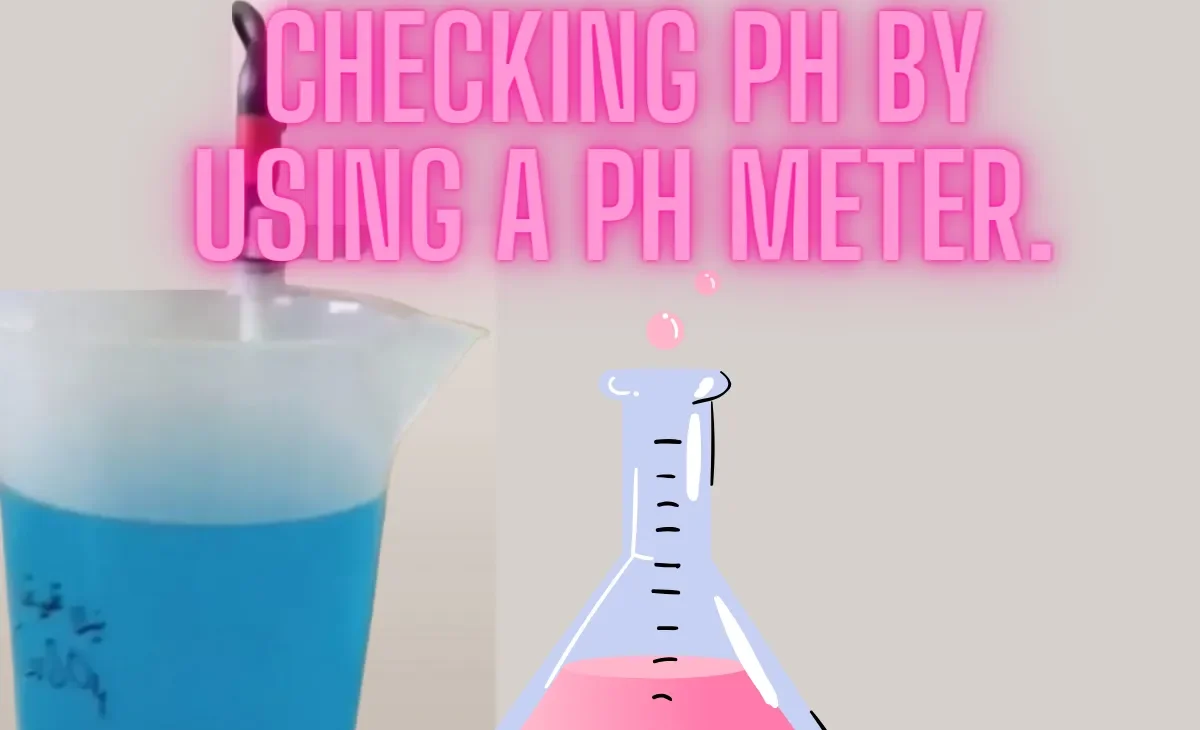
Q: How can I dispose of leftover Bordeaux mixture safely?
Ans: Do not dispose of it down the drain or in waterways. Check with local authorities for proper disposal methods in your area.
Q: Can the Bordeaux mixture contaminate water sources?
Ans: Improper use or disposal can contaminate water sources. Always follow recommended application practices and disposal guidelines.
Q: Does the Bordeaux mixture affect soil quality?
Ans: Heavy use can lead to copper buildup in the soil, potentially impacting soil health over time. Practice responsible application and consider alternative methods for long-term plant health.
Q: Are there any alternatives to the Bordeaux mixture that are less harmful to the environment?
Ans: Yes, several options exist for managing fungal diseases with less environmental impact:
Neem oil: A natural fungicide derived from the neem tree.
Baking soda solution: A mild fungicide option for some diseases.
Sulfur fungicides: Effective against various fungal problems but can have a strong odor.
Biological control agents: Introducing beneficial organisms that prey on fungal pathogens.
Cultural practices: Promoting good air circulation, proper watering techniques, and removing plant debris to create a less favorable environment for fungus growth.
Q: What are some preventative measures I can take to avoid fungal diseases?
Ans:
- Choose disease-resistant plant varieties.
- Provide adequate air circulation around plants.
- Avoid overhead watering, which can promote fungal growth.
- Water plants at the base instead of on the leaves.
- Remove and dispose of infected plant parts to prevent further spread.
- Practice crop rotation to disrupt fungal life cycles in the soil.
- Maintain healthy soil with proper drainage and organic matter content.
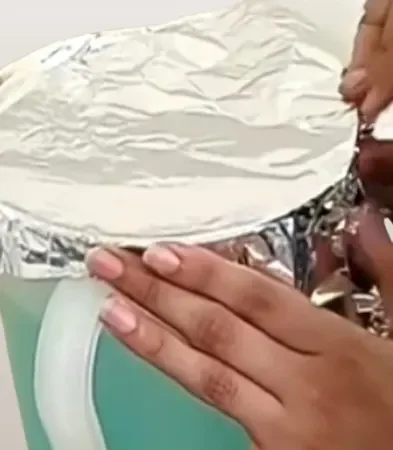
Q: What happens if it rains shortly after applying Bordeaux mixture?
Ans: Heavy rain can wash away the protective coating, reducing its effectiveness. Reapplication might be necessary depending on the severity of the rain.
Q: Can I mix the Bordeaux mixture with other pesticides or fertilizers?
Ans: It’s not generally recommended. Mixing Bordeaux mixture with other chemicals can lead to unpredictable reactions, reducing effectiveness or even damaging plants. Always check product labels for compatibility information.
Q: Can I use Bordeaux mixture on edible fruits and vegetables?
Ans: While generally safe when used according to instructions and with proper pre-harvest waiting periods (refer to product label), some regions may have restrictions. Always check local regulations and follow safe application practices.
Q: How long should I wait before harvesting fruits or vegetables after applying Bordeaux mixture?
Ans: Refer to the specific product label for pre-harvest intervals. This ensures the copper residue levels fall below safe consumption limits.
Q: Does Bordeaux mixture stain surfaces?
Ans: Yes, the Bordeaux mixture can leave a blueish stain on concrete, pavers, or other surfaces. Be careful when spraying and consider using a tarp to protect surrounding areas.
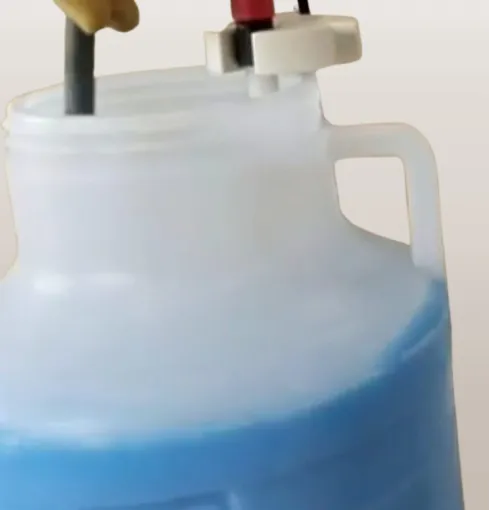
Q: How should I store the Bordeaux mixture?
Ans: Store it in a cool, dry place, out of reach of children and pets. Keep the container tightly sealed to prevent moisture absorption and ensure effectiveness.
Q: Does the Bordeaux mixture expire?
Ans: Bordeaux mixture can lose potency over time. Check the product label for an expiration date. Generally, unopened and properly stored Bordeaux mixture can last for several years.
Q: Can I reuse the leftover Bordeaux mixture from a previous season?
Ans: It’s best to use a fresh Bordeaux mixture for optimal effectiveness. However, if stored properly, leftover mixture from the same season might still be usable. Test a small amount on a plant to check for any adverse effects before large-scale application.
Q: How does the Bordeaux mixture work to kill fungus?
Ans: The copper in the Bordeaux mixture disrupts essential fungal functions, hindering their growth and reproduction.
Q: Can fungal diseases develop resistance to the Bordeaux mixture?
Ans: Yes, overuse can lead to fungal strains developing resistance. Practice responsible application and consider rotating with other fungicides for long-term disease management.
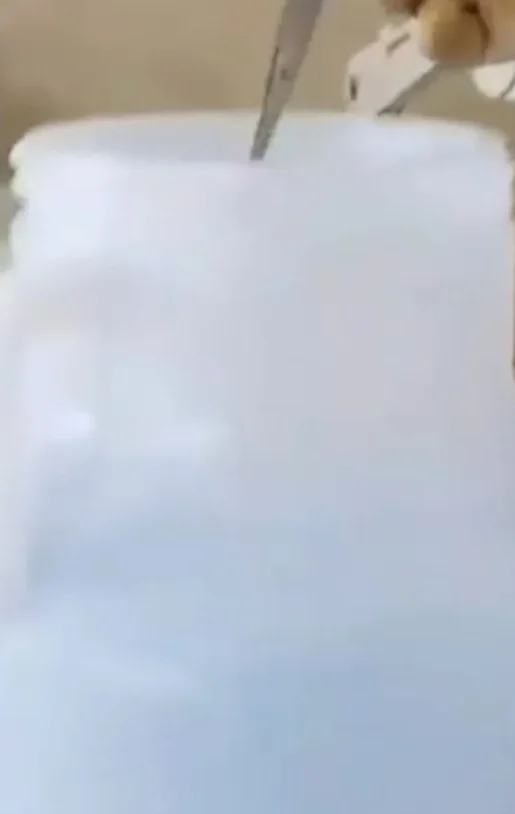
Q: Are there any tests available to determine copper levels in soil?
Ans: Soil tests can be conducted to measure copper content. This information can help guide decisions about using Bordeaux mixture and potential soil remediation strategies if necessary.
Q: How can I remediate soil with high copper levels?
Ans: Several techniques can help reduce copper levels in soil over time, such as applying organic matter like compost, planting copper-tolerant cover crops, or using soil amendments specifically designed for copper remediation.
Q: What are some emerging research areas related to the Bordeaux mixture and its alternatives?
Ans: Research is ongoing to develop new and more environmentally friendly fungicides. Additionally, scientists are exploring ways to improve the efficiency and targeted application of the Bordeaux mixture while minimizing its environmental impact.
Q: Where can I find more information about the Bordeaux mixture & other plant disease management strategies?
Ans:
- Reputable gardening websites & publications.
- Local Cooperative Extension offices.
- University horticulture departments.
- Your local gardening centre or nursery professionals.
Q: Is it advisable to consult a professional before using the Bordeaux mixture?
Ans: For complex situations, infestations covering large areas, or if dealing with rare or valuable plants, consulting a professional arborist or plant pathologist can be beneficial. They can provide tailored advice based on your specific needs and local regulations.
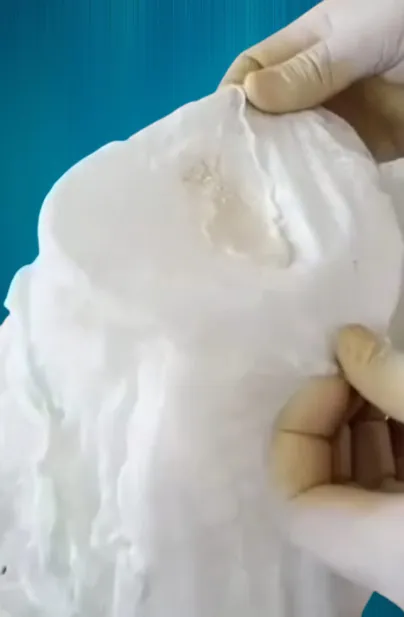
Q: Is Bordeaux mixture safe to use on roses?
Ans: Yes, the Bordeaux mixture can be effective against fungal diseases like black spots on roses. However, some rose varieties might be sensitive to copper. Test on a small area first and follow recommended application rates.
Q: Can I use Bordeaux mixture on grapevines to control downy mildew?
Ans: Bordeaux mixture is a common choice for controlling downy mildew in grapes. However, proper timing and application techniques are crucial to avoid damaging the grapes. Consult a viticulture expert for specific recommendations for your grape variety and region.
Q: Is the Bordeaux mixture suitable for tomato plants?
Ans: While Bordeaux mixture can be used on tomatoes for some fungal diseases, it’s not always the best option. Copper can accumulate in tomatoes, so consider alternative fungicides or preventative measures like good air circulation and proper watering.
Q: Can I use Bordeaux mixture on fruit trees?
Ans: Bordeaux mixture can be effective against fungal diseases on fruit trees like apple scab or peach leaf curl. However, follow specific application guidelines for each fruit tree type and adhere to pre-harvest waiting periods for safe consumption.
Q: Is Bordeaux mixture suitable for use in organic gardening?
Ans: While not certified organic in some regions, Bordeaux mixture is often considered an acceptable choice for organic gardeners due to its natural ingredients. However, responsible use and exploration of alternative methods are still recommended for long-term organic gardening practices.

Q: Which fungal diseases are most effectively controlled by the Bordeaux mixture?
Ans: Bordeaux mixture has a broad spectrum of activity and is effective against many fungal diseases, including downy mildew, powdery mildew, black spots, anthracnose, and some fungal blights.
Q: Can the Bordeaux mixture be used to treat existing fungal infections on plants?
Ans: While it has some curative properties, the Bordeaux mixture is most effective as a preventative measure. Apply it before signs of disease appear for optimal results.
Q: Does the Bordeaux mixture work against all types of fungal spores?
Ans: Bordeaux mixture primarily targets actively growing fungal spores. It might not be as effective against resting spores that lie dormant in soil or plant debris.
Q: Are there any fungicides that can be used curatively after a fungal infection is established?
Ans: Yes, several fungicides are designed for curative action. However, effectiveness depends on the specific disease and the severity of the infection. Consulting a plant pathologist can help choose the best treatment option.
Q: How can I stay updated on new research and developments related to Bordeaux mixture and alternative fungicides?
Ans: Subscribe to reputable gardening newsletters or online publications.
Follow horticulture or plant pathology research institutions on social media.
Attend local gardening workshops or seminars hosted by universities or cooperative extension offices.
By staying informed, you can make responsible choices about using Bordeaux mixture & explore new methods for keeping your plants healthy and disease-free.
